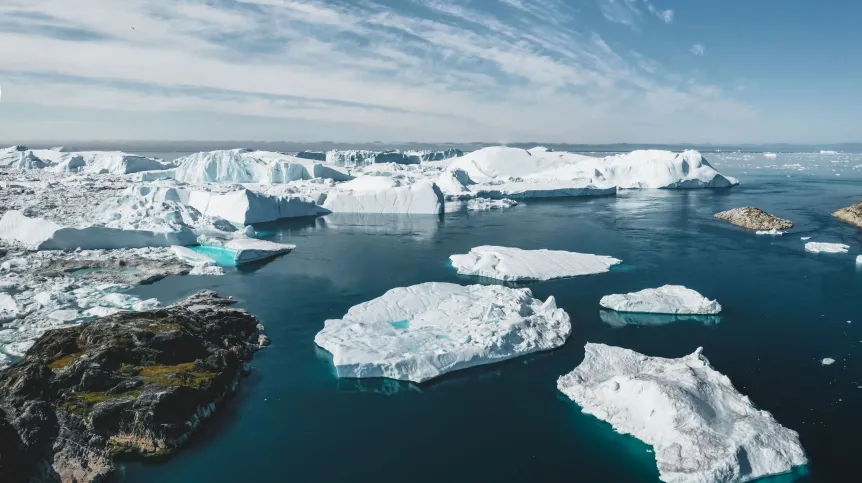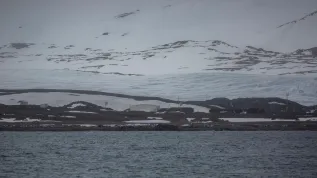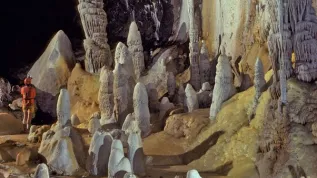
Average temperatures in the Arctic are rising, especially in the summer; the amount of precipitation is also increasing. Polish scientists working in Svalbard have investigated how warming and the behaviour of permafrost affect the water cycle.
For decades, scientists around the world have been observing climate change, including an increasingly significant increase in average annual temperatures, which affects ecosystems, sea and land ice, and freshwater resources.
Temperatures are rising faster in the Arctic than in other regions. In practice, this means rapid warming, especially in the summer season, and an increase in the amount of precipitation. One of the Arctic regions where a significant increase in summer temperatures has been observed in recent decades is the Svalbard region. The precipitation pattern there is also changing. 'In late summer and autumn, we observe an increase in short-term precipitation events, which have become very high in recent years', says, Łukasz Stachnik, a polar researcher at the Cold Regions Research Centre of the University of Wrocław (UWr).
The impact of such rapid changes on water circulation in polar regions has not been previously described in detail based on many years of observations, Łukasz Stachnik and Maciej Bartosiewicz from the Department of Polar and Marine Research of the Institute of Geophysics of the Polish Academy of Sciences point out in a release sent to PAP - Science in Poland. Together with other scientists from the University of Wrocław, the University of Silesia, the Institute of Meteorology and Water Management and the Institute of Nature Conservation of the Polish Academy of Sciences, they took a closer look at this phenomenon. They published their results in the "Journal of Environmental Management".
These scientists conducted an analysis of hydrometeorological data from the Bratteggdalen glacier catchment in Svalbard - a Norwegian island in the Arctic Ocean, located near the Baranowski Arctic research station of the University of Wrocław. The local ecosystem was used as a model of a glacial catchment, formed on permafrost as a result of the accelerated recession of the Brattegg glacier. In simple terms, a glacial catchment is an area from which all water flows, for example, into a river, lake or another receiver.
Łukasz Stachnik emphasises that in the last one hundred or two hundred years, the studied area has undergone changes related to the disappearance of glaciers and the formation of a system of lakes. Observing such changes, scientists talk about the 'evolution of the catchment'. 'First we have a glacier that filled a significant part of the catchment - especially during the Little Ice Age. Later, the glacier shrinks, freeing up space that fills with water and a lake is formed', he explains.
The scientists examined the region using high-quality data from 2005-2019 and the results of archival measurements from the 1970s and 1980s. They compiled these data and determined how changing meteorological conditions affected water flows during the long-term evolution of the local hydrological system.
The authors of the study confirmed that average spring temperatures were getting higher between 1979 and 2019. 'For over 40 years, Svalbard has been experiencing very clear warming and an increase in rainfall during the warm season. This is also when the snow cover disappears. The same warming causes the permafrost to thaw more quickly', Łukasz Stachnik says. 'All this affects the hydrological system: it facilitates water outflow in the active layer, i.e. the surface layer of permafrost that thaws in the summer'. Such conditions can develop during an extended period with continuous runoff from the catchment, which can currently persist for about four months a year.
Stachnik adds that for a long time 'perennial permafrost was something permanent, constituting a natural barrier to the flow of water in the summer. However, as it is getting warmer, the ground thaws to a certain depth. The depth at which this thawing occurs changes with the progress of climate change: the warmer it is, the deeper the ground thaws. Currently, this thawing is much deeper. As a result, water that falls as rain or snow - and hits the ground, which has thawed more - can flow much more easily in deeper layers'.
'Seasonal floods, associated with heavy rainfall on the snow cover, cause it to melt and intensively increase water levels. In the late summer and autumn half of the year, when the snow cover disappears, the air temperature has a relatively stronger effect on the water circulation in the catchment area', the authors of the study explain. The study explains how climate change is shaping the Arctic water cycle, and the results can be used to develop strategies to minimize the risk of extreme hydrological events in the polar and alpine regions.
According to scientists, rising temperature and increased rainfall in late summer and autumn will intensify. And this will continue to accelerate water circulation in the environment. 'We should be prepared for the fact that with further increases in temperatures and precipitation, Arctic catchments covered with permafrost will be subject to more violent floods', Łukasz Stachnik concludes. (PAP)
PAP - Science in Poland
zan/ bar/













